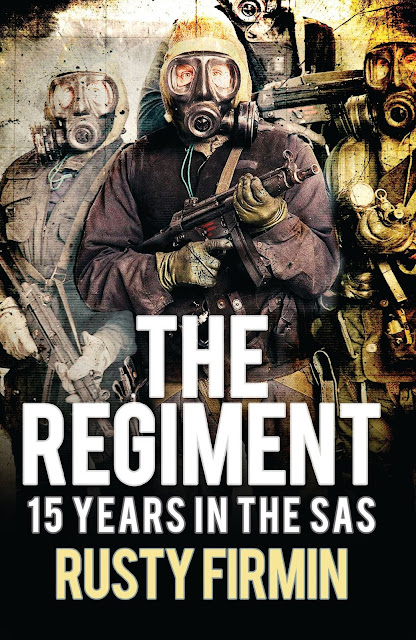The SAS operation "Nimrod" took place here in 1980. My photo from 2019.
30 April 2020 it is 40 years since the start of one of the most famous anti-terrorist operations ever. In the end, Special Air Service (SAS) operators saved all but one of the remaining hostages. Do watch the movie about the event, but bear in mind that it says very little about one lesson from the event - a lesson that we ought to be more aware of.
As a kid in the early 1980s I was favourably impressed by the abseiling SAS soldiers that hit the global news. But their appearance at the Iranian embassy in London was also a bit terrifying. Dressed largely in black, with their faces inside black respirators and wielding black submachine guns (Heckler & Koch MP5s), they looked rather sinister (Darth Vader-ish). Naturally, as soon as "6 Days" was released I was keen to see how a detailed reenactment of the event would look like. Well, it is not just about the 17 minute SAS assault, but about the whole Iranian embassy siege of 30 April to 5 May 1980. The siege situation is presented from three perspectives and it is quite moving to follow the negotiator Max Vernon (Mark Strong). But, being fond of books about the SAS, I was more interested in the SAS perspective, i.e. Rusty Firmin (Jamie Bell). "6 Days" made me wonder about some of his decisions and therefore I wanted to know more from the actual Rusty Firmin. Here is the book by him that I then got:
The book Rusty Firmin wrote about his career in the SAS. Some surprising insights.
Rusty Firmin´s The Regiment (2015) explains a key moment in the embassy that the movie "6 Days" portrays rather poorly, it seems to me. There is also the book focusing on the siege that Firmin wrote together with Will Pearson, entitled Go! Go! Go! (2011), and then there is e.g. Who Dares Wins (2009) by Gregory Fremont-Barnes. But hey, no book will probably affect the general public´s knowledge about the event as much as the movie "6 Days", which is why I decided to write this blog post. In spite of everything that I appreciate in "6 Days", there is one big thing the film makers could have done better. Who was behind the whole thing? Of course, the movie informs a bit about the terrorist group that took over the embassy, the Democratic Revolutionary Front for the Liberation of Arabistan. However, there was a state behind the group: Iraq. The Iraqi state under Saddam Hussein not only prepared, financed and supplied the terrorists (e.g. with Soviet RGD-5 hand grenades and Czechoslovak Skorpions). One of their Iraqi intelligence handlers had even taken them to London. In "6 Days" this is summarized too much, the relevant scene is so short that some may miss it.
So, what on the surface looked like the act of a terrorist group of Arabian separatists from Iran was more like an Iraqi strike against Iran. Byt why is this small proxy war in London forty years ago relevant for us in 2020? Well, there were several terrorist actions during the 1980s, in different countries, that still today are sometimes not portrayed as what they mostly were, war by proxy. That is a form of warfare that has made a comeback in recent years, and therefore we need to be able to identify and understand it. Iraq under Saddam was not the main culprit, usually it was one or more security/intelligence agencies from the Soviet bloc. But these quite often used terrorists, not least Arab terrorists. This modus operandi even affected my native Sweden, and it took many years for Swedes to start realizing this.
Seeing the Iranian embassy in London today is just like seeing it on 30 April 1980. It was seriously damaged at the end of the siege but has been nicely restored. It is easy to see the embassy yourself as it is in the heart of London. There are some other places connected to SAS history not far from the embassy and I will be writing about these in a London guide that I intend to release here in a month or so.



https://youtu.be/xsL3d-tbZkI se värt lars
ReplyDelete